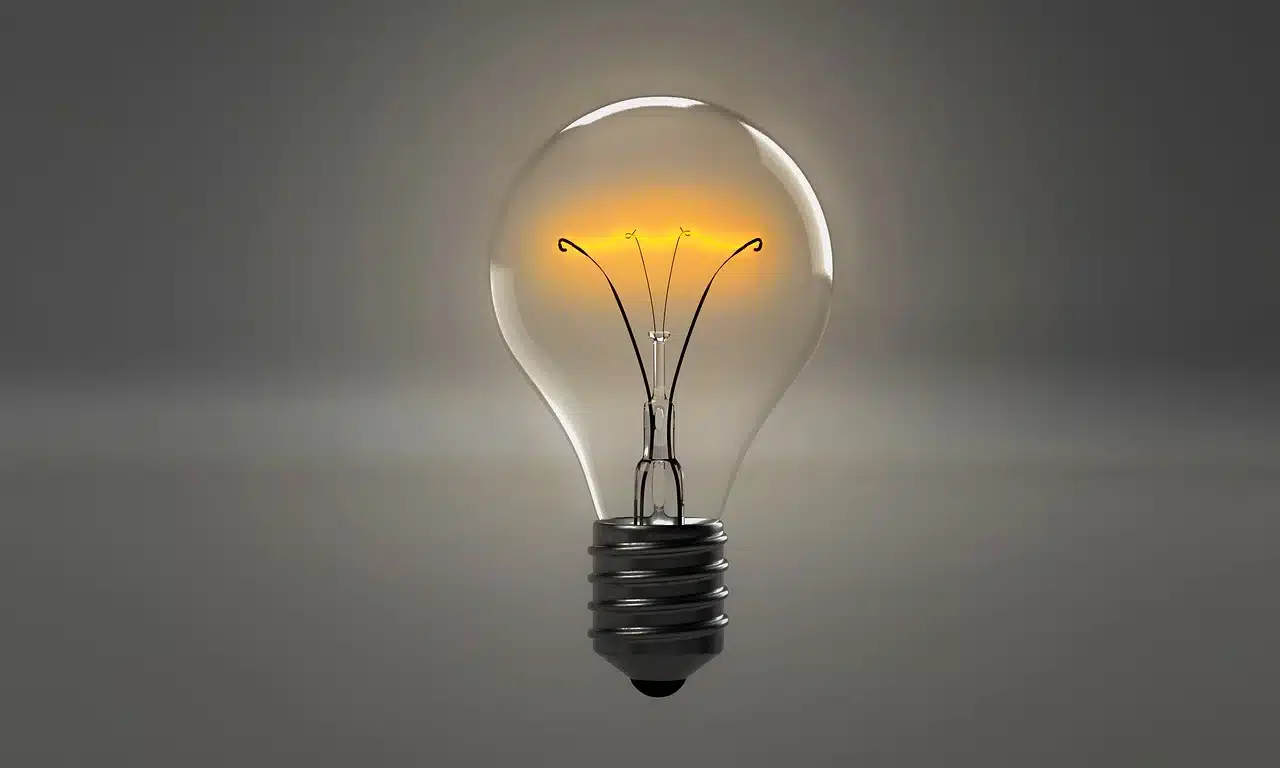Are you someone who struggles to stay calm in stressful situations? If so, you’re not alone. Situational anxiety can be overwhelming, and finding effective ways to heal it is essential for your overall well-being. That is where today’s episode of the anxiety guy podcast comes in, enjoy!
In this episode, we will explore how harnessing the power of visual imagery can help you go from chaos to calm.
By incorporating the Magic Circle into your daily routine, you can learn to navigate stressful moments with greater ease and find a sense of tranquility.
Visual imagery, when used correctly, has the potential to reduce anxiety symptoms significantly. By engaging your imagination and creating mental pictures, you can shift your focus away from stressful circumstances and towards a more peaceful state of mind.
Whether you’re facing a daunting presentation at work or feeling anxious before a big meeting, the Magic Circle will provide you with the mental clarity that will take you beyond situational anxiety for good. Join me in this podcast episode as I guide you through the journey of taming situational anxiety and discovering inner calmness through the power of the Magic Circle.
Understanding situational anxiety and its impact
Situational anxiety is a common experience characterized by excessive worry, fear, and physical symptoms such as rapid heartbeat and sweating. It typically arises in response to specific situations or events that are perceived as threatening or challenging. While some level of anxiety can be normal, excessive situational anxiety can have a profound impact on your daily life and well-being.
When anxiety takes hold, it can impair your ability to think clearly, make rational decisions, and perform at your best. It can also lead to physical discomfort and a range of negative emotions. Recognizing the signs and understanding the impact of situational anxiety is the first step towards effectively managing it.
To better understand the impact of situational anxiety, let’s consider a common scenario: public speaking. Many individuals experience intense anxiety before and during public speaking engagements. The fear of being judged, making mistakes, or forgetting important points can be paralyzing. This anxiety can hinder your ability to deliver a confident and engaging presentation.
The power of the Magic Circle in healing anxiety
Visual imagery is a powerful tool that can help you manage situational anxiety. It involves using your imagination to create mental images that evoke positive emotions and a sense of calm. By directing your attention towards these pleasant images, you can shift your focus away from anxious thoughts and feelings.
The human brain is wired to respond strongly to visual stimuli. When you engage in visual imagery, you activate the same neural pathways that are involved in perceiving and experiencing the real world. This means that your brain can’t differentiate between a vividly imagined image and an actual experience, allowing you to tap into the soothing effects of visual imagery.
Visual imagery works by activating the parasympathetic nervous system, which is responsible for the body’s relaxation response. This response counteracts the effects of the sympathetic nervous system, which is responsible for the body’s stress response. When you engage in visual imagery, your body releases neurotransmitters such as dopamine and serotonin, which promote relaxation and feelings of well-being.
Scientific evidence supporting the use of visual imagery for anxiety
The use of visual imagery for anxiety management is supported by scientific research. Numerous studies have demonstrated the effectiveness of visual imagery in reducing anxiety symptoms and improving overall well-being.
One study conducted by researchers at the University of Michigan found that individuals who engaged in visual imagery experienced a significant reduction in anxiety levels compared to those who did not. The study participants were asked to imagine themselves in calm and peaceful environments and visualize positive outcomes for challenging situations. The results showed that visual imagery not only reduced anxiety but also improved participants’ self-confidence and ability to cope with stress.
Another study published in the Journal of Clinical Psychology examined the effects of visual imagery on individuals with social anxiety disorder. The researchers found that incorporating visual imagery into cognitive-behavioral therapy significantly reduced social anxiety symptoms and improved overall functioning. The participants reported feeling more relaxed, confident, and in control during social situations after practicing visual imagery exercises.
These findings highlight the potential of visual imagery as a powerful tool for managing anxiety. By incorporating visual techniques into your daily routine, you can experience significant improvements in your ability to cope with stressful situations and find lasting calm.
How visual imagery works to reduce anxiety
Visual imagery works by redirecting your attention away from anxious thoughts and towards positive and calming mental images. By engaging your imagination, you activate the brain’s visual processing centers, which in turn trigger the relaxation response.
When practicing visual imagery, it’s important to create vivid and detailed mental images that evoke a sense of tranquility. Imagine yourself in a peaceful and serene environment, such as a beautiful beach or a serene forest. Focus on the sights, sounds, and smells of this imagined place, allowing yourself to fully immerse in the experience.
As you visualize this calming scene, pay attention to how your body responds. Notice the sensations of relaxation and peace washing over you. By repeatedly engaging in visual imagery and associating it with feelings of calmness, you can condition your mind and body to respond more positively to stressful situations.
Techniques for incorporating visual imagery into your daily routine
Incorporating visual imagery into your daily routine can help you build resilience and manage situational anxiety more effectively. Here are some practical techniques to get you started:
1. Morning Visualization: Begin your day by spending a few minutes visualizing a positive and calm day ahead. Picture yourself confidently navigating through any challenges that may arise, and imagine yourself feeling calm and in control throughout the day.
2. Guided Imagery: Utilize guided imagery resources, such as meditation apps or audio recordings, that provide step-by-step instructions for visualizing relaxation and calmness. These resources can help you deepen your practice and enhance the effectiveness of visual imagery.
3. Mini Visual Breaks: Incorporate mini visual breaks into your day to reset and recharge. Take a few moments to close your eyes and visualize a peaceful scene, focusing on the details and sensations. This can be particularly helpful during stressful moments at work or before important meetings.
4. Bedtime Visualization: Before going to sleep, engage in a bedtime visualization exercise. Imagine yourself in a safe and serene environment, allowing the worries of the day to melt away. Focus on deep relaxation, and visualize a restful night’s sleep.
Remember, the key to effective visual imagery is practice. The more frequently you engage in these techniques, the more natural and powerful they will become. With time and dedication, you can harness the power of visual imagery to manage situational anxiety and find lasting calm.
Creating a personalized visual imagery toolkit
Creating a personalized visual imagery toolkit can enhance the effectiveness of your anxiety management practice. Here are some elements to consider including:
1. Positive Affirmations: Incorporate positive affirmations into your visual imagery practice. These are short, uplifting statements that can help counteract negative thoughts and promote a sense of self-assurance. For example, you might visualize yourself repeating affirmations such as “I am calm and capable” or “I can handle any situation with ease.”
2. Symbolic Objects: Identify symbolic objects or images that hold personal significance for you. These could be items that represent peace, strength, or resilience. Incorporating these symbols into your visual imagery practice can provide additional support and meaning.
3. Powerful Imagery: Discover images or photographs that evoke strong positive emotions. These could be pictures of loved ones, serene landscapes, or motivational quotes. Collect these images and use them as visual cues during your practice to enhance the emotional impact of your visualizations.
4. Journaling: Consider keeping a journal to document your visual imagery practice. Write down your experiences, reflections, and any insights gained. This can help you track your progress and identify patterns or themes that emerge over time.
By creating a personalized visual imagery toolkit, you can tailor your practice to align with your unique preferences and needs. Experiment with different elements and find what resonates most with you.
Using visual imagery to prepare for situational anxiety
Visual imagery can be a valuable tool for preparing yourself mentally and emotionally for stressful situations. Whether you’re facing a challenging work presentation or a nerve-wracking social event, utilizing visual imagery can help you feel more confident, composed, and focused.
Before the stressful event, take some time to engage in visual imagery that visualizes a successful outcome. Picture yourself handling the situation with ease and grace, feeling calm and collected throughout. Imagine the positive reactions of others and the sense of accomplishment you will experience.
As you visualize this successful outcome, pay attention to any negative thoughts or doubts that may arise. Challenge these thoughts by replacing them with positive affirmations and reinforcing your belief in your abilities. By repeatedly practicing this visualization exercise, you can build your confidence and reduce anxiety leading up to the event.
Integrating visual imagery into relaxation exercises
Visual imagery can be seamlessly integrated into relaxation exercises to enhance their effectiveness. When combined with deep breathing, progressive muscle relaxation, or mindfulness techniques, visual imagery can deepen your state of relaxation and promote a greater sense of calm.
During relaxation exercises, incorporate visual imagery by focusing on a calm and serene scene. As you inhale deeply, imagine breathing in tranquility and peace. As you exhale, visualize releasing any tension or stress from your body and mind.
Continue to engage your imagination by visualizing yourself in this peaceful scene, fully experiencing the sights, sounds, and sensations. Allow yourself to immerse in the serenity of the moment, feeling a deep sense of relaxation and well-being.
By combining visual imagery with relaxation exercises, you can create a powerful synergy that promotes profound relaxation and stress reduction.
Combining visual imagery with other anxiety management strategies
While visual imagery is a potent tool for managing situational anxiety, it is most effective when combined with other evidence-based anxiety management strategies. Here are some strategies that can complement and enhance the effects of visual imagery:
1. Cognitive Restructuring: Cognitive restructuring involves challenging and reframing negative thoughts and beliefs that contribute to anxiety. By identifying and replacing anxious thoughts with more realistic and positive ones, you can reduce anxiety symptoms and enhance the effectiveness of visual imagery.
2. Mindfulness Meditation: Mindfulness meditation cultivates present-moment awareness and non-judgmental acceptance. By practicing mindfulness, you can develop a greater sense of calm and reduce anxiety symptoms. Combining mindfulness meditation with visual imagery can deepen your ability to stay present and focused.
3. Physical Exercise: Engaging in regular physical exercise has been shown to reduce anxiety and improve overall well-being. Physical activity releases endorphins, which are natural mood-boosting chemicals. By incorporating exercise into your routine, you can enhance the effects of visual imagery and promote a greater sense of calm.
4. Social Support: Building a support network of friends, family, or support groups can provide invaluable emotional support during times of stress and anxiety. Sharing your experiences and connecting with others who understand can help validate your feelings and provide a sense of belonging.
By combining visual imagery with these complementary strategies, you can create a comprehensive approach to managing situational anxiety and promoting lasting calm.
Conclusion: Embracing the power of visual imagery for situational anxiety
Situational anxiety can be overwhelming, but by harnessing the power of visual imagery, you can transform chaos into calm. Visual imagery offers a powerful and accessible tool for managing anxiety and promoting emotional well-being.
Through engaging your imagination and creating mental pictures of peaceful and positive scenes, you can redirect your focus away from anxiety-inducing thoughts and towards a state of tranquility. By practicing visual imagery regularly and incorporating it into your daily routine, you can cultivate resilience, confidence, and lasting calm.
Remember, managing situational anxiety takes time and commitment. Be patient with yourself as you navigate this journey, and celebrate each small victory along the way. With the power of visual imagery at your disposal, you can conquer anxiety and discover inner calmness, enabling you to thrive in any situation that comes your way.
So, why wait? Start incorporating visual imagery into your life today and unlock the potential for a calmer, more peaceful existence.
Biggest epiphany from today’s anxiety guy podcast episode on situational anxiety? Share with the rest of our peaceful warriors in the comment section below.
The Anxiety Guy Podcast is one of the most popular mental health podcasts in the world with more than 6 million downloads alongside the Health Anxiety Podcast Show.
It has been selected as the top mental health and anxiety podcast on Apple 6 times, and has been listen as a top podcast for anxiety today on Psychology Today, Choosing Therapy, Better Help, Women’s Health, Marissa Peer and many more. To listen to any of the past episodes for free, check out this page.
Listen to all future anxiety guy podcast episodes on Spotify, Tune-in, Podbean, Podbay, Podcast Addict, Scribd, Luminary, Google Podcasts, Amazon Music, or on your favorite podcast platform. You can watch all previous anxiety guy episodes through video on YouTube here.



















